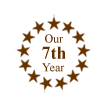.
Continued from product description
on Home Crafts' Page Four...
Historical
Background: Early American colonists wove with flax and
cotton even though weaving was against British law. Unfinished
flax and cotton were supposed to be sent to England and the colonists
were expected to buy the finished goods, such as fabric, from
England. England would not allow their colonists to import sheep
or to even have wool! Sheep were eventually brought to America
from other countries allowing for the production of wool threads
for weaving.
Before wool fibers could be woven, they had to be washed,
carded to get the long fibers all lengthwise, and then spun into
thread with drop spindles or spinning wheels. This spun thread
or yarn could then be dyed with berries, tree bark, flowers,
or herbs. Weaving fabric for clothing for the entire family was
a demanding job. Children helped out with many of these chores
even when they were very young. Weaving was considered a necessity
rather than an art in Colonial America. Weaving prospered until
about the latter half of the 18th century. The Industrial Revolution
caused many young women to leave their homes and work in the
factories. By 1828, power looms were being used in American and
European factories and mills.
Before the American Civil War (1861-1865), weaving looms were
still a common item in many households -- especially in the Appalachian
Mountains. Some families were fortunate enough to have a special
room or shed just for the weaving loom. Otherwise, a loom might
be set up during the cold winter months, when women had more
time to weave, and disassembled and stored during the summer
months. Weavers used cotton, flax, and wool to weave fabric for
clothing. As manufactured cloth became more available in this
area, weavers used their looms to make decorative items for the
home, such as coverlets. Weaving became a lost art by the 1890s
due to the vast availability of manufactured cloth. It has become
prevalent again, and there are many weaving guilds today restoring
the popularity of this ancient craft.
The development of the frame loom meant that a weaver could
have a portable tool that could be taken almost anywhere. Frame
looms are a wonderful piece of inexpensive equipment that can
be used to teach weaving to children. A floor loom is not always
available for demonstrations, but with the availability of the
small frame looms, children can have their own and some fun recreating
this ancient craft.
For more information on weaving, go to the historical background
for our My First Weaving Loom (4302).













